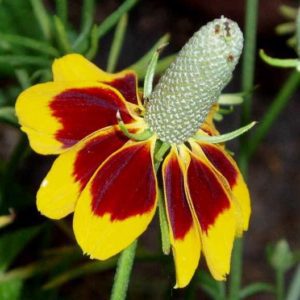Some people grow plants purely for their aesthetic properties, opting for the most beautiful, interesting or complementary varieties to make their garden pop. Some, on the other hand, like to ensure that what they are growing is both beautiful and potentially useful. Sometimes that utility is unknown until someone happens along and shares just how valuable a plant really is. With flowers, it’s easy to forget that they can provide utility as well as beauty, but it’s the truth! In fact, some flowers are prized for their usefulness in some of the most unlikely applications. Read on and next time you take a walk around your garden you might look at those beautiful blooms in a whole other light.
Nasturtium
This gorgeous, rambling plant will fill your garden with beautiful jewel-tone flowers ranging from white to orange and red. A great plant to grow in your beds, they can provide cover to your soil and act as a beneficial friend to your taller plants. What many people don’t realize, however, is that nasturtium is almost entirely edible. From the tender leaves, to the beautiful glowing flowers, they provide a pepper flavor similar to radish that goes well with many dishes. Some opt to brighten up their salads with the gorgeous blooms, while some use the leaves as wraps for meats, cheeses or spreads. It’s an excellent plant to grow if you value both beauty and utility.
Coneflower
Coneflowers are playful flowers that seem to reach for the sky, their “cones” extending well beyond the flower petals beneath. While gardeners know this as a stunning full sun perennial, others know it by it’s name in health food stores: echinacea. That’s right, you may have been growing echinacea without even realizing it! The flowers are dried and used to make a fantastic herbal tea that is well known for its ability to help strengthen your immune system. Simply harvest your blooms and hang them to dry and viola, you’ve got a loose leaf echinacea that you can mix with your own tea blends or drink on its own.

Foxglove
Foxglove sounds like an adorable item of clothing meant to keep the paws of adorable little foxes warm during winter. Don’t let the name fool you, however, as it doesn’t truly capture the nature of this beautiful flowering plant. The fact is, Foxglove is a producer of digoxin, digoxin, and other cardiac glycosides. Put plainly, it produces chemicals, which can affect the heart. It’s so strong, that it was originally used to create the heart drug Digitalis. Yes, you should always be careful to avoid ingesting this plant and position it out of reach of children or pets so you can still enjoy it’s beauty. Still, it’s a useful plant for the medical community, and a truly gorgeous specimen to boot.
Squash
While growing squash is its own reward, the eye-catching golden flowers are a delightful bonus to the culinary minded. You see, before the flowers open up, they make an excellent vessel to stuff with a variety of ingredients and then fry for a delicious and experiential starter sure to impress any dinner guest. You’ll have a really hard time finding squash blossoms at your local supermarket, so growing them yourself is one of the only ways to enjoy this beloved dish.

Calendula
Also known as marigold, calendula puts out showy, fluffy orange flowers that look great in the garden. While they are extremely valued for their beauty, they are also highly prized for their medicinal qualities. It’s commonly used to prevent muscle spasms, begin menstrual periods, and reduce fever. It is also used to treat sore throat and mouth, menstrual cramps, cancer, and stomach and duodenal ulcers. It’s used in both a dry form and by pressing for oil.
The bottom line is, nature provides. The beauty of your garden is always a high priority, but it never hurts to plant things that can be useful as well as eye-catching. The next time you’re planning your garden beds, consider adding one of these fantastic options to your landscape. Even if you don’t use them, it’s a great opportunity to share some knowledge with others. Who knows—perhaps you’ll inspire them to start growing their own gardens!
Have a favorite flower with special uses we didn’t mention? Leave us a comment to let us know!